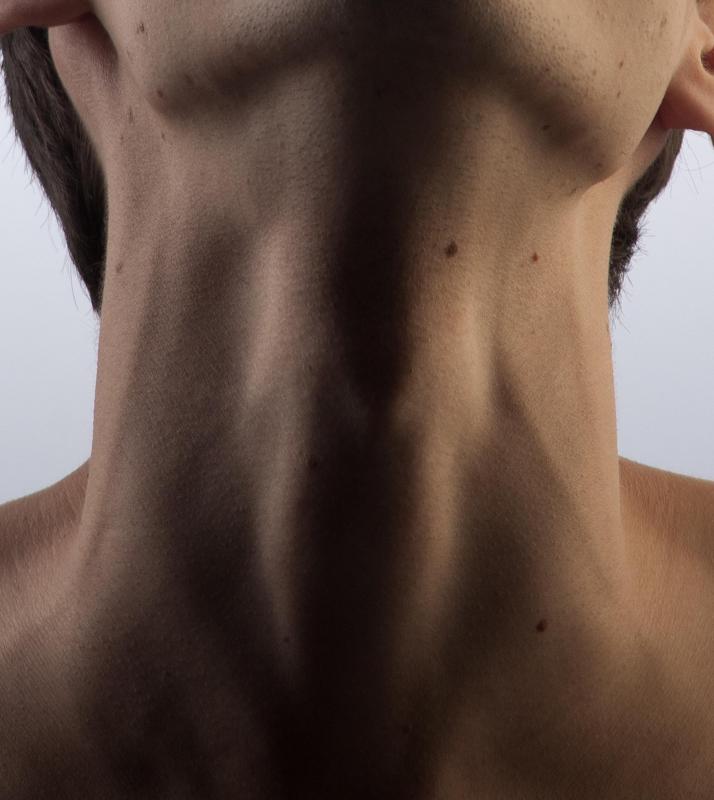At TheHealthBoard, we're committed to delivering accurate, trustworthy information. Our expert-authored content is rigorously fact-checked and sourced from credible authorities. Discover how we uphold the highest standards in providing you with reliable knowledge.
What is the Jugular Vein?
The jugular vein, like most veins in the circulatory system, carries deoxygenated blood from body tissues back to the heart. The jugular is a vein that carries a relatively large volume of blood from the tissues of the head and brain, and drains blood into the subclavian vein and the superior vena cava on its way to the heart. There are actually four jugular veins, two on each side of the neck. The internal jugular veins are much larger than the external ones, and therefore more well-known.
Most veins, in addition to carrying blood toward the heart, also have periodically spaced valves that only allow the blood to flow in one direction. Without these valves, the circulatory system could become inefficient or even be damaged due to the backflow of blood in the system. Arteries, on the other hand, don’t have or need these valves because of pressure exerted by the heart and other muscles that keeps blood flowing in one direction.

The external jugular veins collect most of the deoxygenated blood from the outside of the skull and the deeper parts of the face, while the internal jugular veins collect blood from the brain. The word “jugular” is related to two Latin words: jugulum, meaning collarbone or throat, and jugum, meaning yoke. If an internal jugular vein is opened or punctured, death can result very quickly from loss of blood, because of the quantity of blood carried by these veins. Hence the expression “go for the jugular,” meaning to attack a very vulnerable or vital part.

The jugular vein is sometimes erroneously portrayed as being the entire front of the throat or neck. In reality, while the jugular is a vulnerable spot, it still takes some degree of precision to injure it. Accidental injury is still possible, of course, as was the case with Archduke Franz Ferdinand of Austria. He was killed in a famous assassination, in which an assailant’s bullet hit the Archduke in the jugular vein, causing his rapid death and thereby contributing to the outbreak of World War I.

In some cases, the position of the jugular veins can be visible from the outside. If a jugular vein is particularly prominent when a person is in a sitting position, it can be a sign of congestive heart failure. The height or prominence of these veins can be a good indicator, in this case, of how well the heart is keeping up with the demands placed upon it, or if it is failing to do so.
AS FEATURED ON:
AS FEATURED ON:
















Discussion Comments
That's very thoughtful. This causes me to wonder how this person feels about the gun issue Americans are facing.
My fear has led to the avoidance of some activities. I won't let my sons play with a bow and arrow, for fear that one of them would hit the other in the neck and bleed out. I also don't allow them to carry pocket knives.
My friends think that I'm paranoid, and this may be true. I'm also much less likely than they are to suffer a jugular vein puncture in the family.
Post your comments